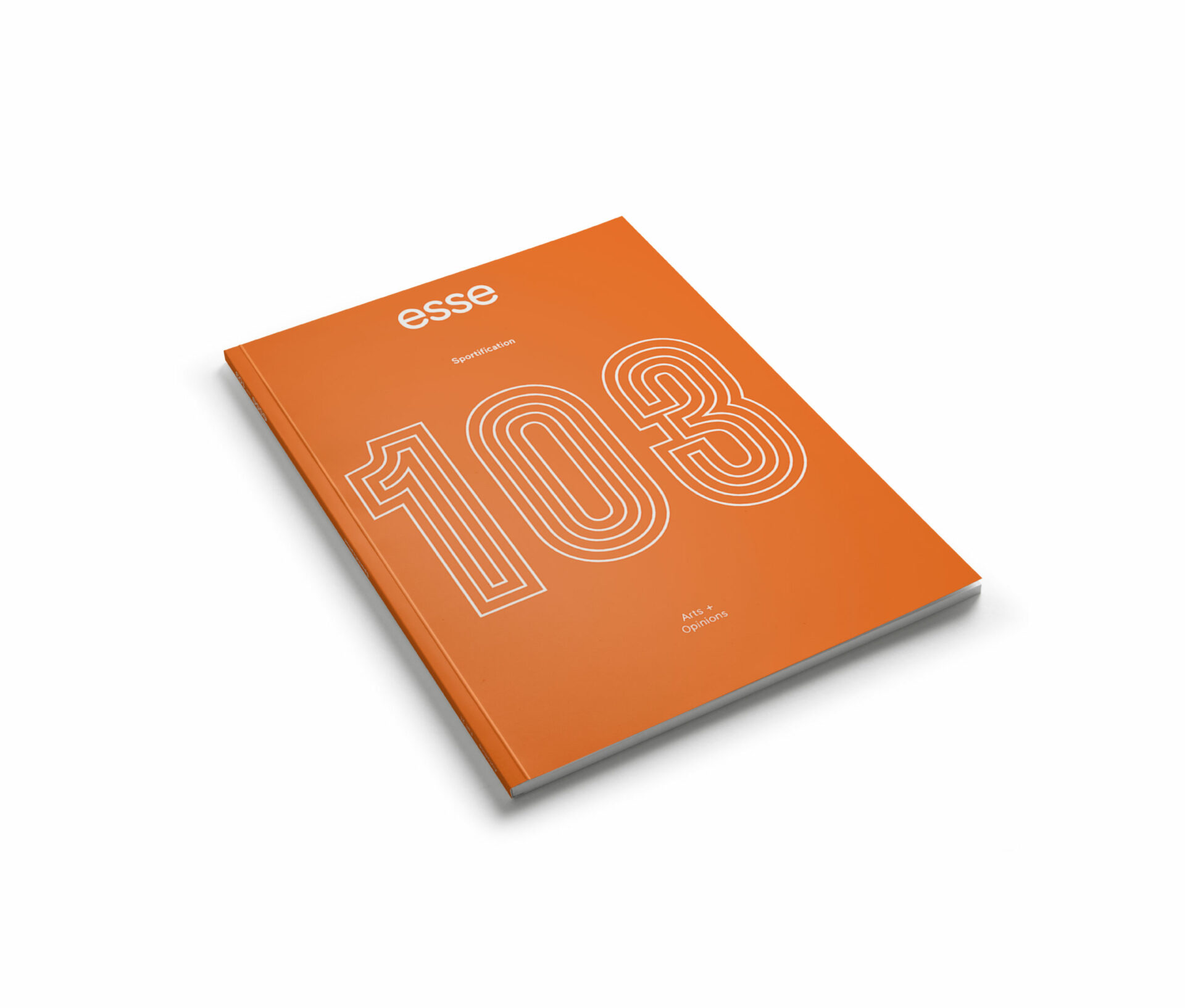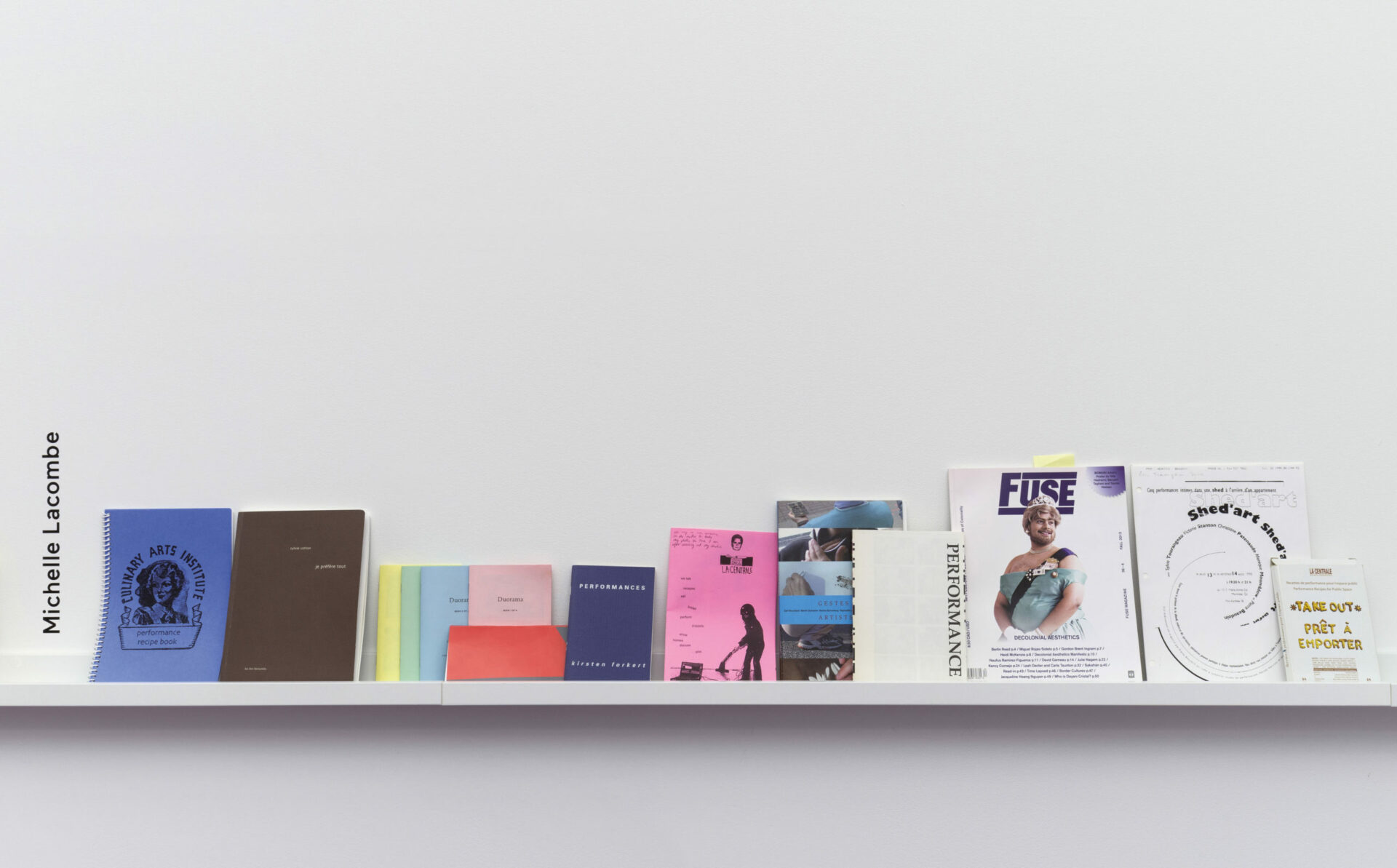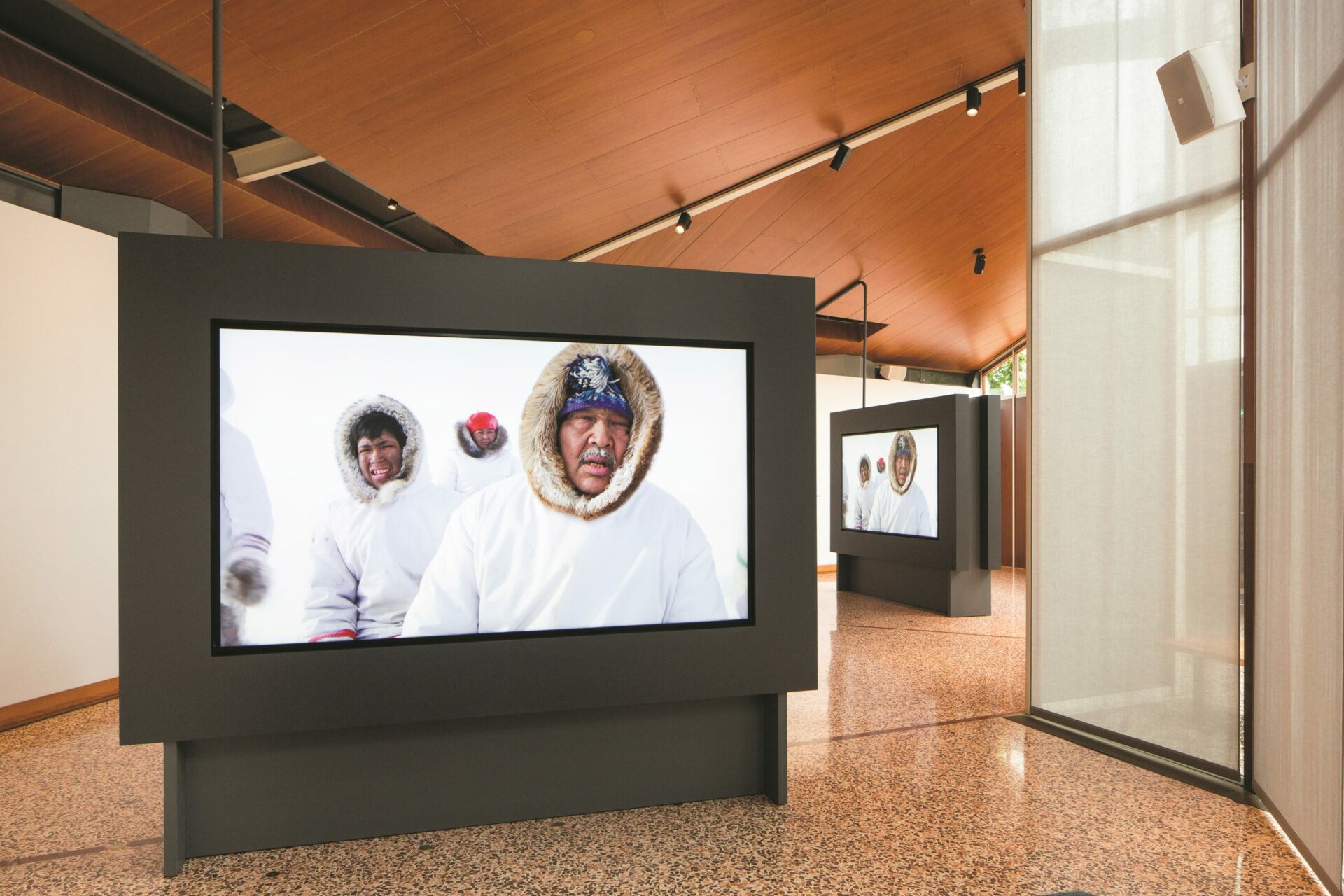
[En anglais]
Imagine, briefly, walking into a museum or gallery, ascending a staircase into an exhibition space. What do you see? Do you see objects cluttered in a small room? Or do you see a space that resembles a white cube, with paintings hung on the walls at eye level? Now, think about what you can hear. Can you hear the voices of other visitors? Can you hear anything else? Do the objects make a sound? Of course not, because when we enter a museum we expect to strain our eyes in a silent space, looking at and taking in the visual qualities of a painting, sculpture, or artefact. But for British sound artist Oliver Beer, “the museum is like a vast multi-layered chambered instrument just waiting to be played.”1 1 - Lauren Rosati, “In Conversation: Oliver Beer’s Vessel Orchestra and the Democracy of Sound,” interview, August 2, 2019, www.metmuseum.org/blogs/now-at-the-met/2019/oliver-beer-vessel-orchestra-interview This might be a strange way to describe museum collections, but many of Beer’s projects are centred around activating different spaces by unleashing hidden sounds. For example, his project Household Gods (2019) presented at Galerie Thaddaeus Ropac in the Marais district of Paris displayed an array of objects as instruments, such as a tiny pot in the shape of an Egyptian god and part of a chimney salvaged from the Palace of Westminster in London, England, after a fire in 1834.2 2 - Oliver Beer, “Household Gods, Galerie Thaddaeus Ropac Paris Marais,” last modified February, 2019, accessible online. In the summer of 2019, The Metropolitan Museum of Art (The Met) in New York City held a similar exhibition by Beer called Vessel Orchestra (2019), featuring thirty-two vessels, statues, and sculptures from The Met’s collection as musical instruments. Like Household Gods, Vessel Orchestra challenges the assumption that artworks should only be looked at. Instead, the exhibition asks, What would these objects tell us if they could sing?
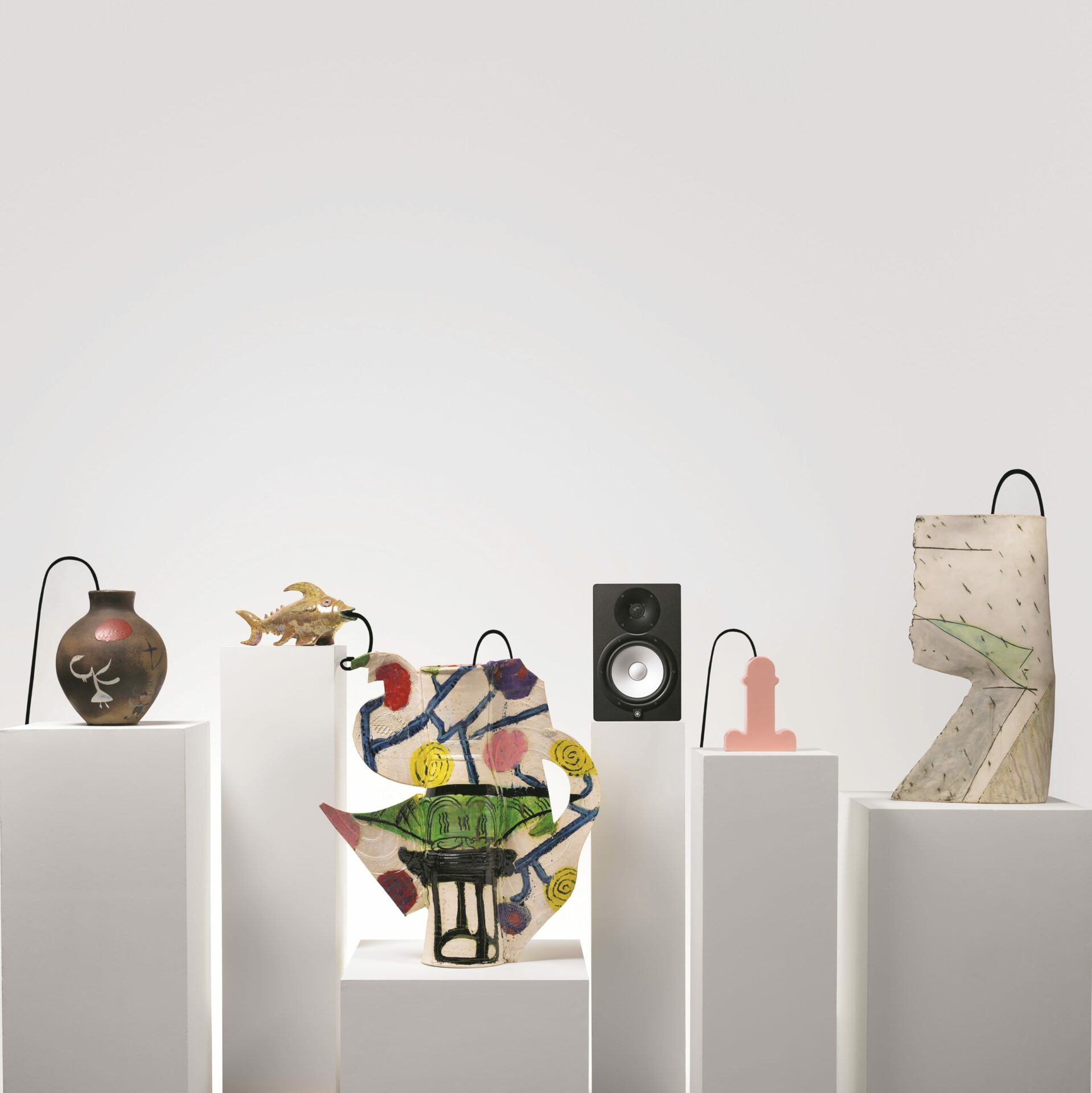
Vessel Orchestra,2019.
Photo : © Oliver Beer, permission de |courtesy of and Galerie Thaddaeus Ropac
Upon entering the gallery in which Vessel Orchestra is on display, visitors see a variety of objects with wires sticking out of them resting on pedestals. Visitors quickly realize they are not only meant to visually consume the objects but to listen to them as well, because there is a keyboard and synthesizer positioned in the centre of the piece that automatically commands the vessels to sing. Visitors are therefore constantly aurally exposed to the vessels’ songs and tunes. Beer explains that he arranged the vessels in the installation based on the kinds of sounds that resonate from them, so they would add to the overall harmony of the orchestra.3 3 - Seth C. Walls, “He Turned the Met Museum’s Collection Into an Orchestra,” The New York Times, July 16, 2019, accessible online. To unleash the sounds hiding in the objects, Beer tested each vessel’s resonance, placed a microphone in it, and then used a keyboard to trigger its sound. For example, a Joan Miró vase resonates at a low F, whereas other vessels resonate at the pitch inherent in the material and geometric properties.4 4 - Ibid. Beer states that when we tune into sonic qualities, objects originating from cultures too often overlooked, such as those in the Middle East and Asia, sing in harmony with objects created by famous Western artists, such as Joan Miró, Ettore Sottsass, and Gaston Lachaise. What ensues is that the Miró, the Sottsass, the Spouting Jar, the Canaanite Jar, and the Lachaise transcend hierarchies, destabilizing the visual narratives at work in the gallery. Constance Classen and David Howes point out that museums have historically collected, and likely stolen, objects and artefacts with varied symbolic and utilitarian uses from different parts of the world. Removed from their places of origin, the objects are forced to conform to a set of values imposed by their host institutions, which almost always place emphasis on vision. In the modern museums founded in the nineteenth century in the West — institutions in North America, Europe, and Australia — objects are so strongly associated with visual signs that it is almost impossible to approach them in ways that don’t privilege sight.5 5 - Constance Classen and David Howes, “The Museum as Sensescape: Western Sensibilities and Indigenous Artifacts,” in Sensible Objects: Colonialism, Museums and Material Culture, eds. Elizabeth Edwards, Chris Gosden, and Ruth B. Philips (Oxford: Berg Publishers, 2006), 199.
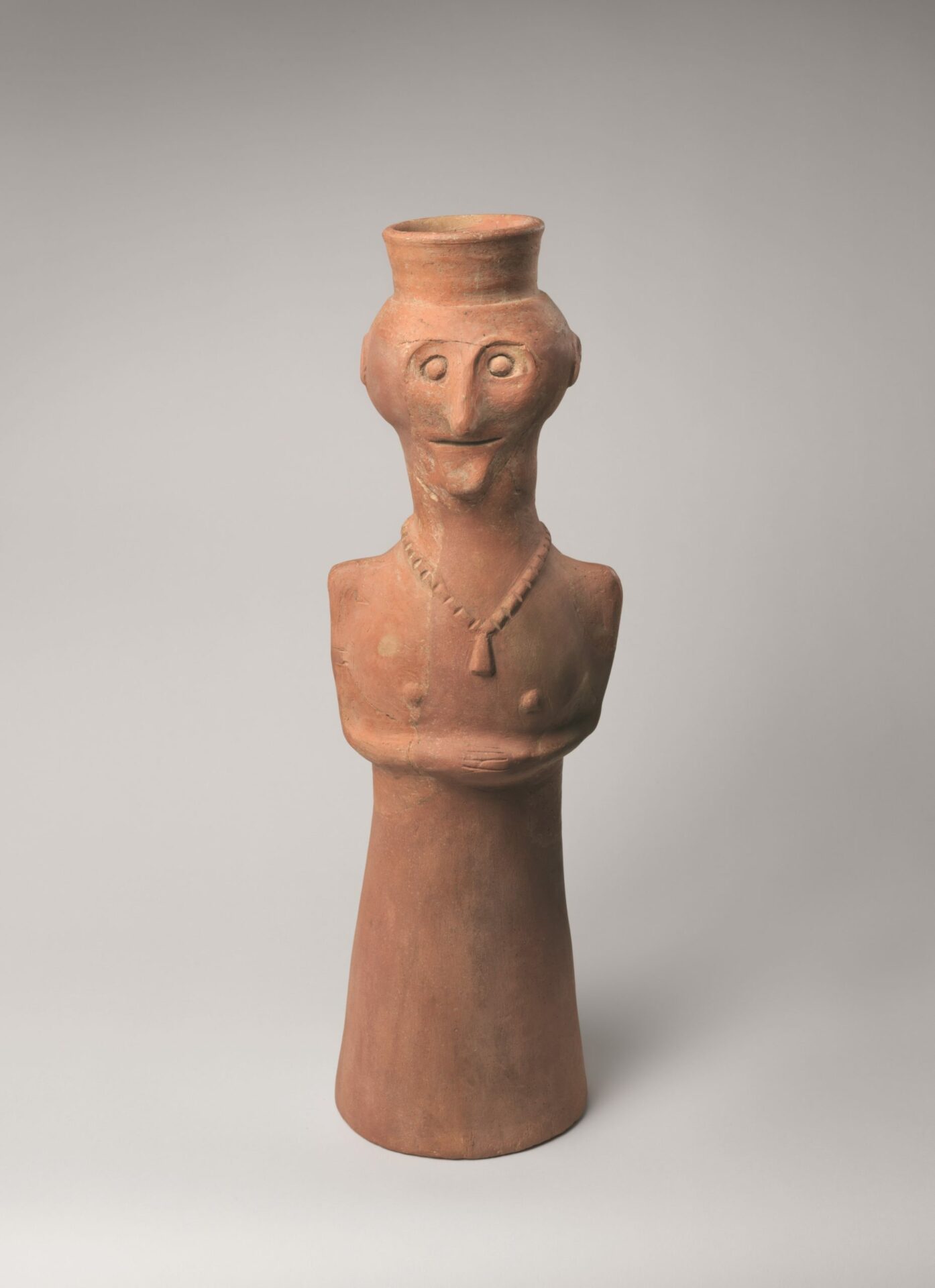
Photo : Rogers Fund, 1943
Vessel Orchestra proactively argues against the museum’s visual objectification and, by extension, rediscovers The Met’s objects by tapping into their sonic properties. One of these objects is Vessel in form of female (?) figure (ca. seventh — sixth century BCE), a ceramic votive vessel from Luristan — a region we know today as Central Iran. However, the vessel’s provenance is attributed to Erich F. Schmidt, who was a member of the first Holmes Expedition sponsored by the American Institute for Persian Art and Archaeology.6 6 - “Vessel in form of female (?) figure,” Metropolitan Museum of Art, www.metmuseum.org/art/collection/search/323945 Schmidt’s excavation follows a pattern of movement in the 1800s and 1900s, in which explorers, colonial officials, and traders brought Indigenous cultural property to Europe and other parts of the world as a way to enhance the growth of Western empires.7 7 - Karolina Kuprecht, Indigenous Peoples’ Cultural Property Claims: Repatriation and Beyond (Cham: Springer International Publishing, 2014), 5. Implicit in processes of looting and colonial conquests is that settler-colonizers, who were often wealthy, white males, believed that Indigenous Peoples’ cultural objects would be better cared for in museums.8 8 - Classen and Howes, “The Museum as Sensescape,” 218. Schmidt more than likely excavated Vessel in form of female (?) figure and took it for the American Institute for Persian Art and Archaeology’s collection without any consideration of its history or importance to Iranian communities. Visitors at The Met appreciated the vessel only for its aesthetic properties until Beer placed it in his orchestra and curated a series of interventions in which different musicians could activate the exhibition, including the Lebanese band Mashrou’ Leila.
Mashrou’ Leila is famous in the Middle East and is becoming known in North America and Europe for political songs that comment on sexuality, toxic masculinity, violence, war, and mythology. As part of Beer’s exhibition, Mashrou’ Leila composed a concert about the fluidity of gender, taking the Vessel in form of female (?) figure as the locus. The band worked with the orchestra as it saw fit, performing a concert that moved between Arabic harmonic scales and Western chromatic harmony.9 9 - Rosati, “In Conversation.” Pianist Firas Abou Fakher played the keyboard that activated the vessels and lead singer Hamed Sinno complemented the gentle flow of sounds, while violinist Haig Papazian and drummer Carl Gerges accompanied the orchestra. It is well known that museums and galleries such as The Met have historically excluded BIPOC (Black, Indigenous, People of Colour) artists, artworkers, and audiences, in favour of white, European male artists and cultures. Mashrou’ Leila and Vessel Orchestra challenge this exclusion through acousmatic practices that explicitly address the museum’s colonial legacy.
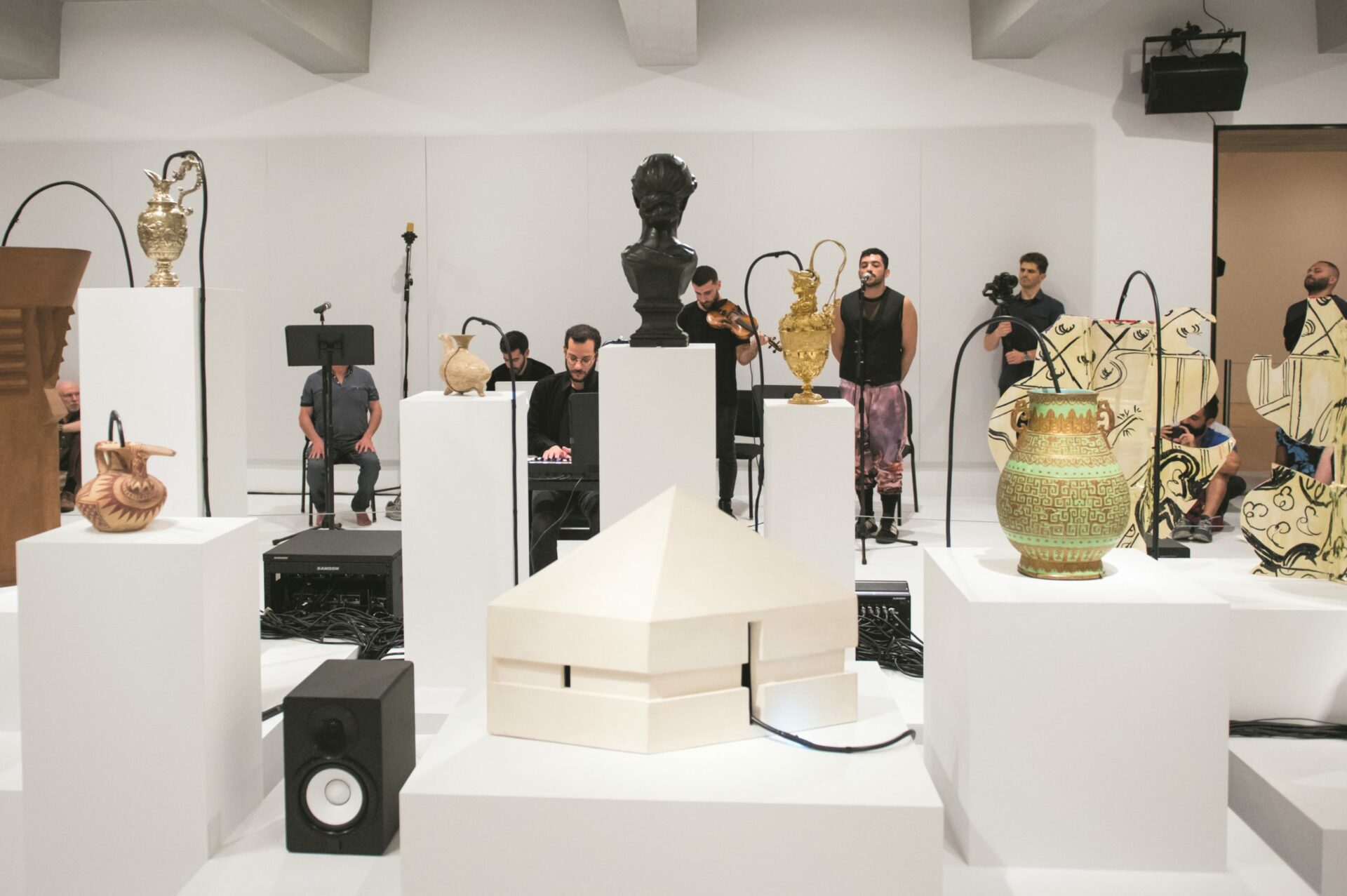
Photo : Paula Lobo
Through sound, Vessel Orchestra subverts the fact that collectors and museums have amassed objects without caring about their sonic properties or listening to those from whom they were taken. Although artefacts are typically appreciated for their line, form, colour, or medium, Vessel Orchestra suggests that using other senses can lead to a true understanding of an object and its specific cultural importance for communities that have been overlooked or ignored within the art-historical canon. Arguably, museums and galleries are under immense pressure to alter their collecting practices, diversify their audiences, and support the work of BIPOC artists and artworkers. Perhaps it is time for museums and galleries to stop looking for strategies of diversity and inclusion, and instead pivot toward a deep listening to the histories of their institutions and the communities that are implicated in their spaces.
